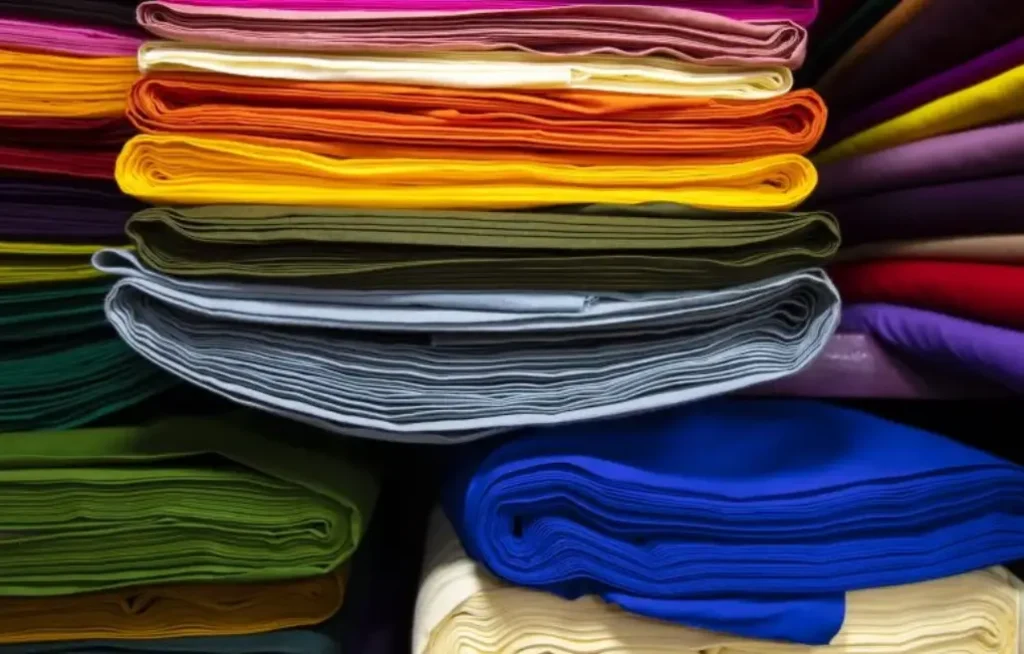Accurately measuring fabric thickness is crucial for ensuring quality control and determining suitability for specific applications. Understanding fabric thickness allows for precise specifications in manufacturing and design. This measurement influences factors like drape, insulation, and durability, impacting the final product’s performance.
This guide explores various methods to measure fabric thickness, providing insights into the tools and techniques used. From simple calipers to advanced thickness testers, each method offers unique advantages. Mastering these techniques ensures accurate and consistent measurements, vital for achieving desired outcomes in textile projects.
What is the Unit of Thickness of Fabric

The unit of thickness for fabric typically depends on the measurement system being used. In the metric system, fabric thickness is commonly measured in millimeters (mm) or micrometers (µm). One millimeter is equal to 1,000 micrometers.
For very thin fabrics, micrometers provide a more precise measurement. In the imperial system, fabric thickness is often measured in inches (in) or thousandths of an inch, sometimes referred to as mils.
While millimeters and inches are used for general thickness measurements, specific industries or applications might use specialized units. For example, in technical textiles or industrial applications, fabric thickness might be expressed in fabric weight per unit area, such as grams per square meter (GSM) or ounces per square yard (oz/yd²), although these units primarily denote weight and density rather than direct thickness. However, since a higher GSM or oz/yd² usually correlates with a thicker fabric, they are sometimes used as an indirect measure of thickness. Understanding the context of the measurement is crucial for accurate interpretation.
How to Measure Fabric Thickness?

How is fabric thickness measured?
Accurately measuring fabric thickness is crucial for ensuring the material’s suitability for specific applications, influencing its performance and aesthetic. Various techniques and tools provide precise measurements, enabling informed decisions in fabric selection and design.
Tools for Fabric Thickness Measurement
Fabric thickness measurement tools are essential for accurately determining the depth of a textile, crucial for quality control, material selection, and ensuring fabrics meet specific application requirements. These tools range from simple mechanical devices to sophisticated digital instruments, each designed to provide precise measurements tailored to different fabric types and industrial needs. The choice of tool depends on the required accuracy, fabric type, and the scale of measurement needed.
These tools operate by applying controlled pressure to the fabric sample and measuring the resulting distance between two contact points. Digital tools often provide higher precision and data logging capabilities, while mechanical tools offer a more straightforward, reliable solution for general measurements. Understanding the characteristics and applications of each tool ensures accurate and consistent fabric thickness measurements.
Here’s a list of common fabric thickness measurement tools:
- Thickness Gauge (Dial Thickness Gauge): A mechanical instrument with a dial indicator, used for quick and relatively accurate measurements of fabric thickness.
- Micrometer: A precision instrument that uses a screw mechanism to measure thickness with high accuracy, often used for delicate fabrics.
- Digital Thickness Gauge: An electronic version of the thickness gauge, providing digital readouts for enhanced accuracy and ease of use.
- Ultrasonic Thickness Gauge: Uses ultrasonic waves to measure thickness, suitable for fabrics that are difficult to measure mechanically, such as coated or laminated textiles.
- Laser Thickness Gauge: Employs laser technology for non-contact thickness measurement, useful for delicate or moving fabrics in continuous production lines.
- Caliper: A versatile tool that can measure internal, external, and depth dimensions. While not specialized for fabrics, it can be used for thicker, more rigid textiles.
- Fabric Weight Per Unit Area Measurement (GSM/oz/yd²): While not a direct thickness measurement tool, GSM (grams per square meter) and oz/yd² (ounces per square yard) are often used to indirectly infer thickness, as higher values generally indicate thicker fabrics.
Step 1. Prepare the Fabric Sample
Begin by preparing a representative fabric sample. Cut a square or rectangular piece, ensuring it is free from wrinkles, folds, or distortions. The sample should be large enough to provide a stable surface for measurement. This step is crucial for obtaining accurate and consistent readings.
Ensure the fabric sample is clean and free from any extraneous materials that could affect the thickness measurement. If the fabric has been treated with finishes or coatings, note this, as it may slightly alter the thickness. For precise measurements, condition the sample in a controlled environment with consistent temperature and humidity. This helps to minimize variations due to environmental factors.
If you are measuring multiple samples, prepare each one identically to maintain consistency. Label each sample clearly to avoid confusion. This is particularly important when comparing fabrics or measuring variations within a single piece of fabric. Proper preparation ensures reliable and comparable thickness measurements.
Step 2. Use a Thickness Gauge or Micrometer
What device is used to measure material thickness?
Select a suitable thickness gauge or micrometer for measuring the fabric. These tools provide precise measurements, often down to micrometers or thousandths of an inch. Ensure the device is calibrated and in good working condition before use. Place the fabric sample between the anvils of the gauge or micrometer, applying gentle pressure to avoid compressing the fabric.
Take multiple readings at different points on the fabric sample to account for variations in thickness. Record each measurement carefully, noting the location and units used. If using a digital gauge, ensure the reading is stable before recording. For manual gauges, read the measurement accurately from the scale.
When using a micrometer, ensure the spindle is gently lowered onto the fabric to avoid crushing or compressing the material. Apply consistent pressure for each measurement to maintain uniformity. Choose a gauge or micrometer with a flat, circular anvil to minimize indentation on soft or delicate fabrics.
Step 3. Calculate and Average the Measurements
Calculate the average thickness of the fabric sample by summing the individual measurements and dividing by the number of readings. This provides a representative thickness value for the fabric. Note any significant variations in thickness, as they may indicate inconsistencies in the fabric’s weave or density.
If you have measured multiple samples, calculate the average thickness for each sample and compare the results. This helps determine the overall consistency of the fabric batch. Document the average thickness and any variations, including the units used. This data is essential for quality control and fabric selection.
For applications requiring precise tolerances, calculate the standard deviation of the measurements to assess the variability of the fabric thickness. This statistical measure provides insight into the range of thickness values and helps determine if the fabric meets the required specifications. Ensure all calculations are accurate and consistent to provide reliable data for fabric evaluation.
Conclusion
Accurately measuring fabric thickness is crucial for ensuring the material’s suitability for specific applications, from delicate apparel to robust industrial textiles. Understanding the various methods, including using a thickness gauge or micrometer, allows for precise measurements, enabling informed decisions in fabric selection and design. These measurements are essential for maintaining quality control and achieving desired performance characteristics.
The techniques outlined in this guide provide a comprehensive approach to measuring fabric thickness, ensuring consistency and accuracy. Whether for manufacturing, design, or quality assurance, these methods offer reliable data for fabric evaluation. By mastering these techniques, you can confidently select and utilize fabrics that meet the exact specifications of your projects.
For high-quality, customizable wholesale fabrics tailored to your specific thickness requirements, contact Fanda Fabrics. We offer a wide range of textiles and can provide expert guidance to ensure you get the perfect materials for your needs. Request a quote today and experience the difference of working with a trusted fabric supplier.
